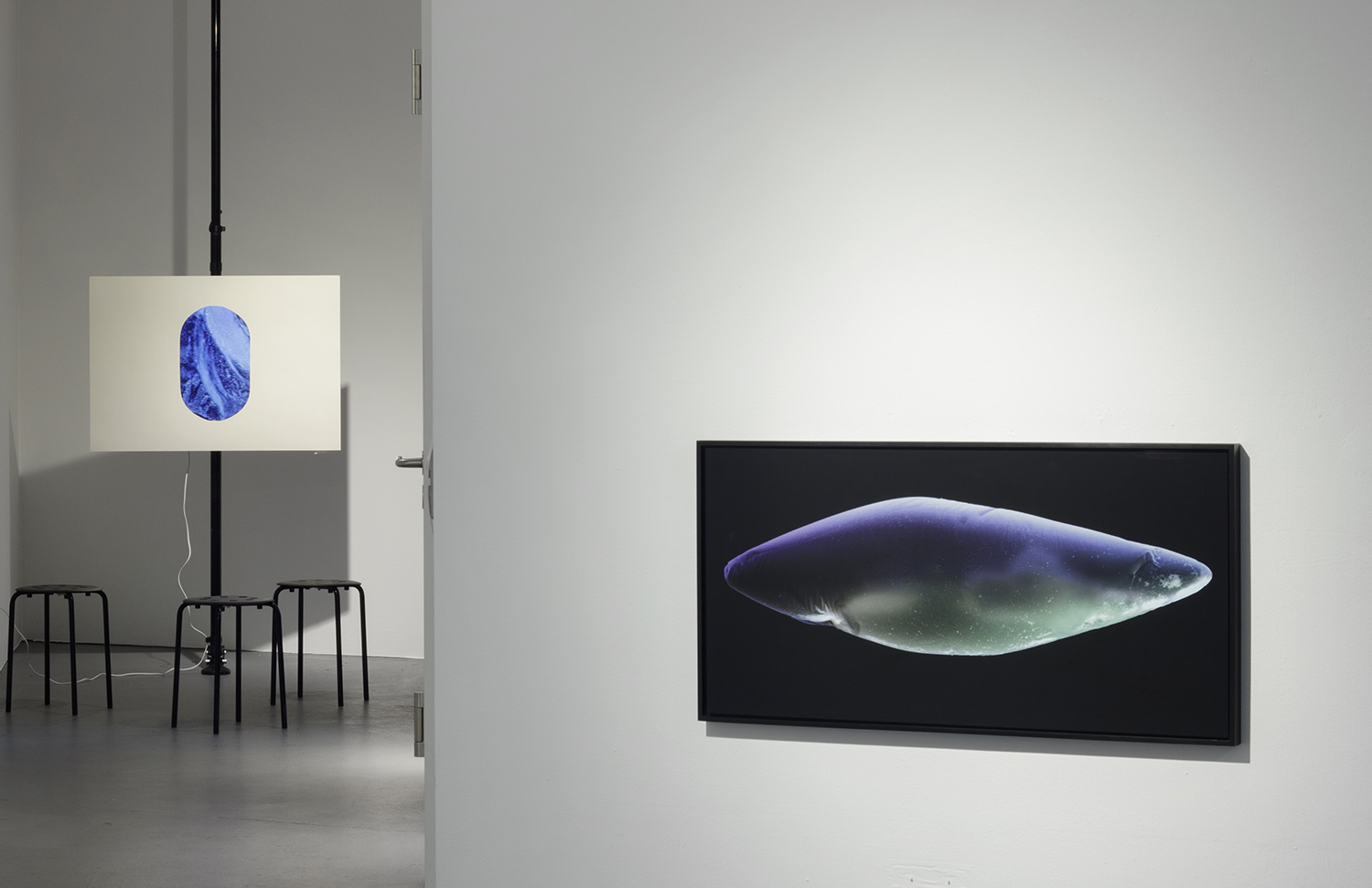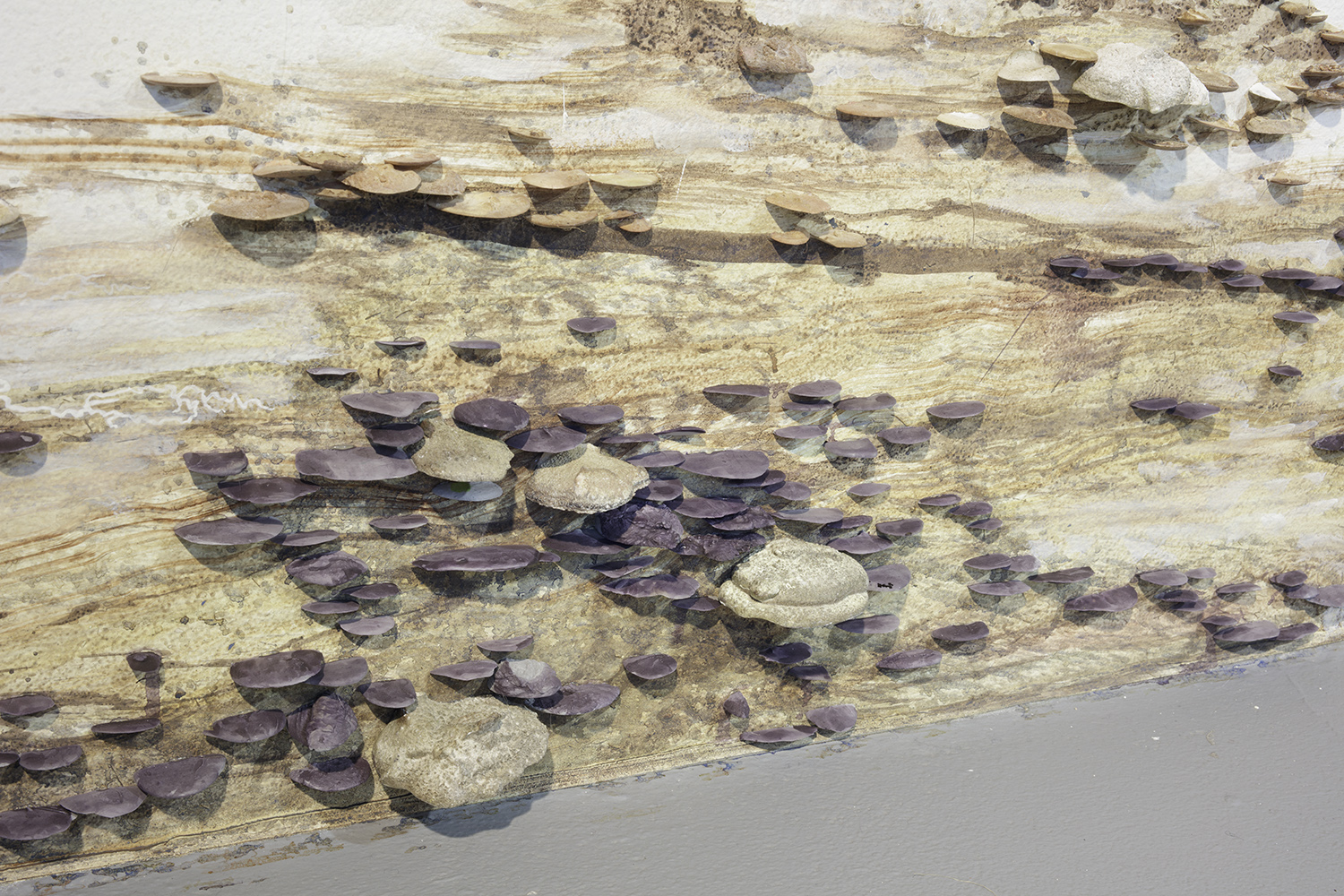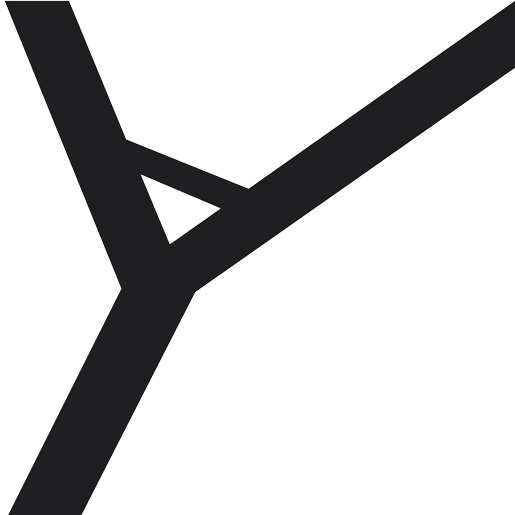Videoart at Midnight: IC-98 im Babylon, 28.1.22 ab 24h (Eintritt frei)
Finissage, 29.1.22, 14-18 h
20.11.21 — 28.1.22 | Mi-Sa / Wed-Sat 14-18 h und auf Anfrage oder per Zufall / upon request and randomly |































Moos oder eine Studie über zerebrale Abgründe, die durch das Leben unter borealen Bedingungen verursacht werden / Moss or A Study of Cerebral Chasms Caused by Living Under Boreal Conditions. Ausstellungsansicht.
Aus Unkenntnis, hedonistischem Desinteresse oder im Zuge der Verdrängung der eigenen Mitverantwortung nehmen wir den drastischen Kahlschlag der Arten und Spezies gar nicht wahr. Die Systemökologie hat die Zusammenhänge, die dazu führen, längst geklärt, dennoch dominiert abseits der Biologie noch heute die Vorstellung von der Natur als harmonischem System, in das sich der Mensch mit etwas gutem Willen einordnen kann.Unzweifelhaft ist das Anthropozän noch nicht im Kopf angekommen. Natur ist dort zu tief als Metapher eingeschrieben. Was ihr nicht entspricht, genießt kaum Aufmerksamkeit. So verändert sich der globale Norden, aus dem das schmelzende Eis und der zusätzliche Regen kommen, die in absehbarer Zukunft erst das Bikini-Atoll und dann Amsterdam untergehen lassen, nahezu unbemerkt. Tatsächlich ist die Landschaft dort relativ artenarm und erholt sich daher im Vergleich zu anderen Vegetationen ungleich langsamer von menschlichen Eingriffen und Umweltkatastrophen. Dennoch spekulieren nicht wenige unverdrossen mit den im schwindenden Eismeer zu erwartenden neuen offenen Schiffrouten, mit der leichteren Zugänglichkeit und damit Wirtschaftlichkeit beim Abbau von Bodenschätzen, mit ganzjährig abbaubaren Torfbeständen und frostfreien Erdölfeldern.Je kleiner die Lebensform desto weniger wird dabei über sie nachgedacht. Moos – genau wie Pilze, Flechten oder Bakterien – existiert in dieser Vorstellungswelt unterhalb des Radars. Sie alle sind kleine, aber zentrale Teile des Ökosystems borealer Landschaften, deren Bild – wie es sowohl die Soziologie als auch die Anthropologie lehren – ein kultureller Entwurf ist, der sich aber dennoch, oder gerade deshalb wirkmächtig in Mentalitäten einschreibt. Moos verweist im Rahmen des Ausstellungskonzepts daher nicht nur auf sich selbst, sondern steht für die Zukunft und die Vergangenheit, aber auch für Sensualismus und Idealismus. Moos steht für ‚imaginierten Norden‘, der von außen an die Region herangetragen wurde und tief im Selbstbild der Bewohner ganzer Nationen verankert ist. Die Ausstellung vereint Arbeiten von Künstler*innen, die sich vor dem Hintergrund der realen Entwicklung und mit dem Erbe eines gescheiterten romantischen Idealismus im Gepäck, explizit mit den Bildern und Realitäten des globalen Nordens auseinandersetzen. Sie alle teilen die Überzeugung, dass Kunst neben dem visuellen vor allem für das kritische Bewusstsein einer Gesellschaft Verantwortung trägt.Das finnische Duo IC-98 (Visa Suonpää und Patrik Söderlund) inszeniert in seinem Film Omnia mutantur (2018) in poetischen Bildern die Langsamkeit subpolarer Natur, indem sie an einer einzigen Stelle Versionen der gleichen Landschaft zu verschiedenen Zeiten zeigen– wie es vor den Menschen war und wie es aussehen wird, wenn wir schon lange nicht mehr da sind. Die Kollaboration mit kleinsten, nicht-menschlichen Organismen kennzeichnet die Bilder und Installationen von Alma Heikkilä, denen sich auch die Rasterelektronenmikroskopbilder aus den Serien 8 Heads High (2016) und Hybrid Matter (2018) von Andreas Greiner zuwenden. Julian Charriére & Julius von Bismarcks Fotografien dokumentieren eine Serie von Interventionen in die Natur 2012/13, die sich mit der disparaten Wahrnehmung der Natur zwischen Realität und Vorstellung und den daraus resultierenden Problemen auseinandersetzt. Ähnlich argumentiert Goshka Macugas Teppichbild Latent Image (2020) aus der Serie ihrer großen Wald-Bilder. Es reflektiert das historisch und ökonomisch bedingte, sich in vielschichtigen inneren Bildern manifestierende Verhältnis des Menschen zum Ökosystem Wald. Antti Majava wird im Rahmen der Ausstellung eine Lecture Performance über ökonomische Aspekte des Waldes als CO2-Speicher halten.Die Ausstellung ist kuratiert von Susanne Prinz und entstand in Kooperation mit dem Finnland-Institut, Berlin.*ITINERANT INTERLUDES präsentiert kurze performative Interventionen in ausgewählten Berliner Galerien/Kunstvereine. Performances reichen von der zeitgenössischen Avantgarde über Elektroakustik bis hin zu Improvisation und sind in Zusammenarbeit mit den beteiligten Künstler, Galeristen und Musiker konzipiert. Ziel der Serie ist es, eine Schnittstelle anzubieten und damit einen lebendigeren Dialog zwischen Rezipienten visueller und audio-akustischer Künste anzuregen. ITINERANT INTERLUDES 2021 wird durch die freundliche Unterstützung der initiative neue musik (INM) ermöglicht und kuratiert von Laurie Schwartz.
Bitte haben Sie Verständnis dafür, dass für alle Veranstaltungen die 2G+ Regeln gelten. | Please understand that the 2G+rules apply to all events.
Out of ignorance, hedonistic disinterest, or due to suppressing our own shared responsibility, we do not even notice the drastic elimination of all kinds of species. Systems ecology has long since clarified the connections that lead to this. Besides that, the idea of nature as a harmonious system still dominates today, into which, with a little good will, humans can integrate themselves.
There is no doubt that the Anthropocene has not yet reached our heads. Nature is inscribed in us too deeply as a metaphor. What does not relate to it attracts hardly any attention. With the exeption of the poles the global north, from which melting ice and extra rain come which in foreseeable future will first sink Bikini Atoll and then Amsterdam, is changing almost unnoticed. This is despite the fact, that the landscape there is relatively poor in species and recovers much more slowly from human interference and environmental disasters compared to other vegetations. Nevertheless, many speculate undauntedly that the new expected open shipping routes through the dwindling Arctic Ocean will bring easier accessibility and thus economic efficiency while mining of mineral resources as well as year-round degradable peat stocks and frost-free oil fields are an added plus.
The smaller the life form, the less thought is given about it. Moss – just like fungi, lichens or bacteria – exists in our world of imagination under the radar. They are all small but central parts of the ecosystem of boreal landscapes. That image – as both sociology and anthropology teach – is a cultural blueprint that nevertheless, or precisely because of this, is effectively inscribed in mentalities. In the context of the exhibition concept, Moss not only refers to itself, but also stands for the future and the past, and for sensualism and idealism. Moss stands for ‚imagined north‘, which once was brought to the region from outside and is now deeply anchored in the self-image of the inhabitants of entire nations. The exhibition connects works by artists who explicitly deal with the images and realities of the global north with the background of real developments and the legacy of failed romantic idealism. They all share the conviction that art, in addition to the visual, is primarily responsible for a society’s critical awareness.
In their film Omnia mutantur (2018), the Finnish duo IC-98 (Visa Suonpää and Patrik Söderlund) stages the slowness of subpolar nature in poetic images by showing versions of the same landscape at different times in a single place – how it was before the people and what it will look like when we have not been there for a long time. The collaboration with the smallest, non-human organisms characterizes the images and installations by Alma Heikkilä, to which the scanning electron microscope images from the series 8 Heads High (2016) and Hybrid Matter (2018) by Andreas Greiner also is directed. Julian Charrière & Julius von Bismarck’s photographs document a series of interventions in nature 2012/13, which deal with the disparate perception of nature between reality and imagination and the problems resulting from it. Goshka Macuga’s carpet work Latent Image (2020) argues similarly. The work reflects the historically and economically determined relationship between humans and the forest ecosystem, which manifests itself in multi-layered inner images. As part of the exhibition, Antti Majava will give a Lecture Performance on economic aspects of forests as CO2 storage.
Interludes are by Martyna Poznańska, who is a transdisciplinary artist and explores symbiotic relationships between human and non-human beings, and the British-Pakistani soprano Mimi Doulton who will deconstruct some Scandinavian classics from the age of romanticism.*
The exhibition is curated by Susanne Prinz in collaboration with the Finland-Institute, Berlin.
19.11.21, interludes von Mimi Doulton (Sopran) und Martyna Poznańska (Electronics)*
ITINERANT INTERLUDES presents pop-up performances in select galleries and institutions of art throughout Berlin. Programs range from the contemporary avant-garde to improvisation, from the acoustic to the electronic, and are curated in collaboration with respective galleries, artists and musicians. The series aims to provide a point of intersection and, ultimately, to stimulate a more vibrant dialogue between audiences of the visual and aural arts. The 2021 series is made possible with support from the initiative neue musik berlin. The project is curated by Laurie Schwartz.

